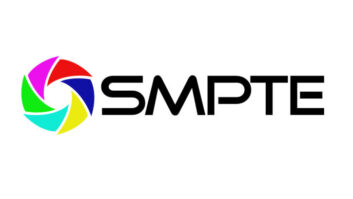Hollywood has experienced numerous renovation attempts over the past few years. Finally, in the wake of a healthy economy and with the long-awaited Metrolink subway stations operational, those attempts are becoming a reality. One sign of the neighborhood’s resurgence of energy is the new Knitting Factory. Set smack in the middle of the urban renewal on Hollywood Boulevard’s Walk of Fame, the venue is contributing a much-needed touch of class to the neighborhood.
Billed as the world’s first “Smart Club” and sporting the catchphrase “Downtown is more than just a zip code,” Knitting Factory is a sleekly elegant two-performance-space venue constructed from the ground up with both recording and the Internet in mind. From the mahogany, brick and glass entrance/bar area to the acoustically isolated stages, KF is wired and ready for anything.
“The most basic element of Knitting Factory has been always putting on a show – being the platform for the artist to connect to the consumer,” explains KF founder and CEO Michael Dorf. “We became a record company 12 years ago, but it was really just expanding on that basic formula. Everything has been built around the recording of the performance, then getting it to as many people as possible. Obviously, the Internet, new media and technology are a perfect fit for us.”
To that end, Knitting Factory Hollywood has Ethernet, DSL and T-1 lines running throughout, aiming for full bandwidth, broadcast-quality audio and video recording, webcasting and interactive programming. In the bar area, four kiosks fitted with parabolic mics are set for interactive webcam connections with Knitting Factory New York (and soon, Knitting Factory Berlin). An “Interactive Table,” set between the bar and restaurant, provides video and audio teleconferencing for 12 participants, and one of the hallways is lined with computer monitors wired for direct connection to companies such as Much Music, Soundbreak.com, Launch.com and Digital Club Network.
Recording, both audio and video, was central to the design of the facility. The performance spaces are constructed to be acoustically isolated from each other, with both rooms floating on rubber pads. The central recording booth, with sightlines to both the Main Stage and the cozy AlterKnit Lounge, is itself a design feature of the club. It looks out over both stages and is visible from the bar and dining areas. All performances can be webcast live, including feeds from backstage camera locations for interviews and commentary.
“Everything happening in the club can be routed through the recording booth,” explains production manager Russ Cole. “We have a fully isolated transformer split from both stages. Both rooms have great acoustics: the AlterKnit Lounge is very intimate, and the Main Stage is extremely flexible, somewhere in between dead and live. The Main Stage sounds so good, in fact, some of the acts have run without monitors, because they could hear themselves so well onstage.”
Las Vegas-based Pro Sound, Inc. served as sound contractor, with design by Larry Spurgeon and Rod Sintow. Systems for both rooms are built around Meyer Sound Labs equipment, utilizing all self-powered speakers. The two-level Main Stage, with a total capacity of 450, has mains comprised of two MTS-4As, four USW-1P subwoofers and a center cluster of four UPA-2Ps. Rear and side delay speakers consist of five UPM-1Ps, the Meyer cabinet often used as front fills in large arenas. There are also two under-balcony UPA-2Ps for use as surround speakers. Onstage are seven UM-1P monitor wedges and two larger, 15-inch USM-1P cabinets. The FOH console is a Crest X 8HS40, the monitor board a Crest X 8-32.
The AlterKnit Lounge, with a seated capacity of 60, is fitted with a Crest X 4-24 console. Mains consist of two Meyer CQ-1s, with four UM-1P stage monitors. In-house recording equipment includes a Yamaha 02R and three Tascam DA-78s.
Knitting Factory is known for booking an eclectic roster of cutting edge artists, in genres ranging from jazz and pop to alt rock and spoken word. That booking policy will continue at the Hollywood venue where the sound system, like the artists who will be using it, is considered to be a “work in progress.”
“Meyer Sound Labs has been incredible,” notes Cole. “They did our New York facility and will do Berlin as well. They are very personally involved. Our deal with them is that if adjustments need to be made down the road, they will swap things out for us.
“What’s great is that we have built-in capability for all the new technology,” he concludes. “You’ll be able to see what’s going on in the other clubs and communicate with people there; we’ll be able to have a band playing in New York with musicians here joining in for a simultaneous performance. All of this ability was designed in from the ground up.”

